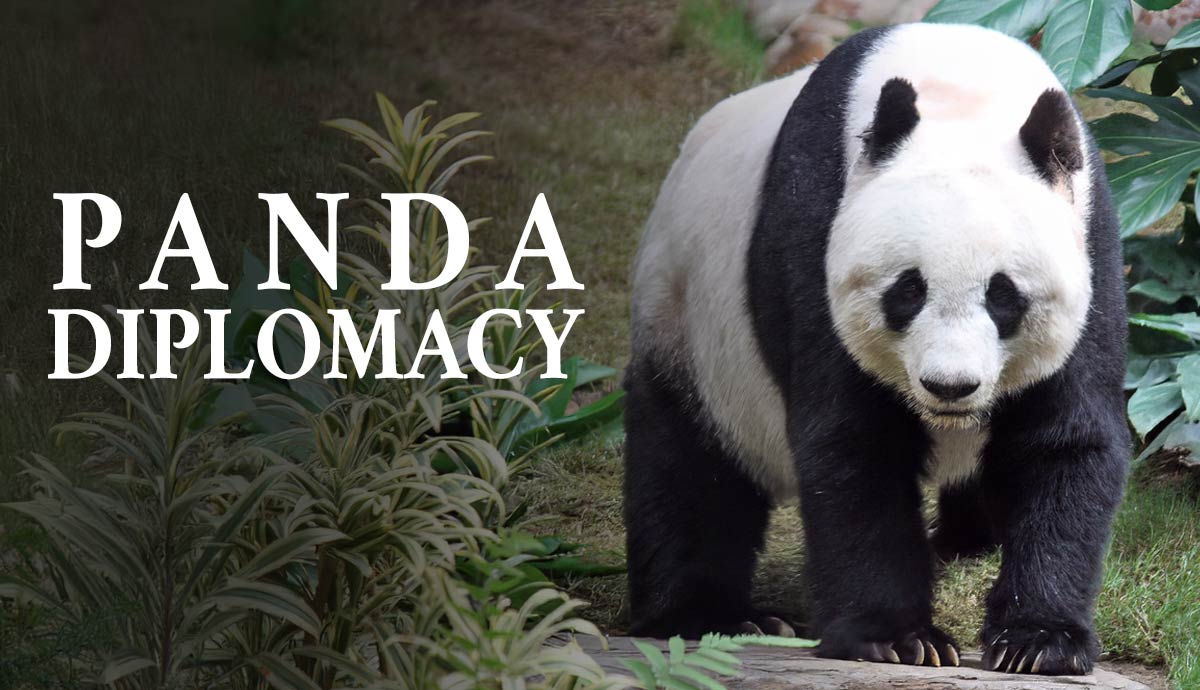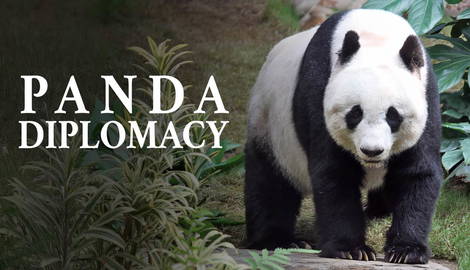
Panda diplomacy is the official name for how and why pandas were distributed to zoos throughout the world. The reason for it be called “diplomacy” was that these exchanges and gifts were made through diplomatic efforts by China to boost its international image. The People’s Republic of China was formed in 1949. In order to extend an olive branch, the country led by Mao began to lend the endangered Giant Pandas to foreign zoos and countries to become animal ambassadors. Many of the pandas were initially given to communist countries because those were the ties that China was interested in cultivating. This included North Korea and the former Soviet Union.
What Are the Origins of Panda Diplomacy?

Even though the term “panda diplomacy” refers to the mid-1900s, the idea of giving pandas as gifts is much older. The Tang Dynasty, from 618-907, has documented cases of panda gifts. This is not unusual, as many nations before animal welfare gained ground would gift native animals to visiting dignitaries. For example, Charlemagne, the former Holy Roman Emperor, received animals from Africa and Asia, including an Asian elephant.
What Role Did President Nixon Play?

We have President Nixon to thank for the first pandas to come to the US. Nixon’s visit to China in February 1972 was a pivotal moment as there had been very little in terms of relationship between the two countries for more than two decades. At dinner, the first lady Pat Nixon mentioned how she loved pandas. They were told that China would be happy to give some to them, and with that, the United States received two pandas from Beijing. The pandas were sent over by cargo plane. In return, China received some musk oxen.
In 1972, Ling-Ling and Hsing-Hsing arrived at the National Zoo in Washinton, D.C., on April 16th. According to The Baltimore Sun at their arrival, “Hsing-Hsing, the male, [was] 13 months old and weigh[ed] 85 pounds; Ling-Ling, the female, [was] 19 months old and weigh[ed] about 150 pounds.” The adorable animals were an instant attraction. While the pair had five cubs, sadly none lived to adulthood.
United States Pandas

The modification of the panda policy occurred in 1984 by Deng Xiaoping, which made the pandas a loan or contract rather than a gift. The first offer of this in the United States was at the 1984 Olympics, where Los Angeles was offered two pandas on loan for $50,000 a month per animal. This money, and future money from the pandas’ loan went towards their conservation.
Part of the agreement of hosting the pandas in the United States zoos was to dedicate information, money, and breeding for their upkeep. This included helping with breeding the giant pandas to help stabilize their numbers. In 2016 they were downgraded from “endangered” to “vulnerable” due to the population increase in the wild. At the time of the change, there were just over 1800 giant pandas found in the wild.
While some zoos, such as the San Diego Zoo, had a longer contract with China, lasting all the way from 1996 to 2019, other organizations, including the Columbus Zoo and Toledo Zoo had shorter contracts of just a year.
How Panda Diplomacy Reflects Our Relationship with China

The presence of pandas in zoos in the United States can be a good indicator of our relationship with China, and what terms we are on. Pandas are on loan from China and can be recalled at any time. Whether the United States retains these animals shows if the diplomatic relations between the US and China are good. In 2010, for example, despite being born in the US, the pandas Tai Shan and Mei Lan were brought back to Beijing after Barack Obama met with the Dalai Lama.
As of early 2024, the zoo in Atlanta, Georgia, was the last zoo to house pandas, with the deal expiring at the end of 2024. Since China decided not to renew the deal, the four pandas, Lun Lun, Yang Yang, and their daughters born in 2016, Ya Lun, and Xi Lun, will return to China.
The Washington Post’s op-ed article by Lonnie G. Bunch III and Ellen Stofan summarizes the situation, stating that, “Pandas are a vital source of cultural diplomacy — using the arts, science and history to help nations find common ground with the hopes of building on our shared humanity to create a more peaceful world. The pandas were a bridge between the American people and the Chinese people.”










